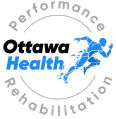A meniscus tear is one of the most common knee injuries. This essential structure of the knee acts as a shock absorber, helping distribute weight and reducing stress on the bones. When the meniscus is damaged, it can lead to pain, stiffness, and swelling, significantly affecting mobility. This blog delves into how physiotherapy can aid in the recovery of a meniscus tear, helping you regain mobility and get back to your normal activities safely and efficiently.
What Exactly is a Meniscus Tear?
The meniscus is one of the most important structures of the knee joint. It is primarily a pad of cartilage that helps absorb shock during physical activities such as walking or high-impact sports. Meniscus injuries are one of the most common knee injuries. They usually occur during a forceful twist or rotation, and impact to the knee joint, especially while the individual is bearing weight.
When injuries to the meniscus occur, there is usually pain, stiffness, and swelling around the knee. There are multiple types of meniscus injuries, with some types being more problematic than others, which makes proper treatment tricky.
The Role of Physiotherapy in Treating Meniscus Tears
Physiotherapy has been found to be helpful in treating and rehabilitating meniscus injuries. Here’s how it helps:
- Reduced Pain and Swelling: Physiotherapy helps reduce swelling and pain during the initial stages of injury. This eases discomfort and promotes faster healing by improving circulation.
- Enhanced Strength and Stability: A tailored physiotherapy exercise plan will focus on rebuilding strength and enhancing balance to support the joint. If the injury is not too severe, physiotherapy can be an excellent way to regain the strength and stability lost during the recovery process.
- Post-Surgery Recovery: In cases where the injury is more severe and surgery is required, physiotherapy is essential in ensuring optimal recovery. It also helps make the recovery process smoother and more comfortable.
- Prevention of Injury: In addition to treating injuries, physiotherapy is also very helpful in preventing them. This is especially true when you are starting a new physical activity. For example, injuries often occur when someone starts a new sport, such as soccer. By preparing yourself for new strenuous activities, you limit your risk of injury and help create a more enjoyable experience.
Recommended Physiotherapy Exercises for Meniscus Tears
The exercise choices for a meniscus tear depend on the presentation of the injury and the limitations of the individual. Because each injury is unique, the exercise regimen used for rehabilitation will also be different. That said, here is what a typical exercise plan for meniscus tear recovery may look like:
- Quadriceps Sets: Tightening the thigh muscles without moving the leg. This is crucial for maintaining knee stability and muscle strength early in recovery.
- Heel Slides: Sliding the heel toward the buttocks while lying down helps improve knee flexibility and restore range of motion with minimal strain.
- Straight Leg Raises: Lifting the leg while keeping the knee straight strengthens the quadriceps, which is essential for knee support as you regain mobility.
- Hamstring Curls: Bending the knee to strengthen the hamstrings, which helps balance the forces on the knee and supports joint stability.
- Wall Squats: A controlled squat against a wall to strengthen the quadriceps, hamstrings, and glutes while promoting knee stability for everyday movements.
- Calf Raises: Strengthening the calf muscles improves lower leg stability and helps reduce strain on the knee during walking or standing.
These exercises offer a solid foundation for strengthening and stabilizing the knee, but your physiotherapist will tailor a plan specifically for you based on your injury and recovery stage.
Can Physiotherapy Heal Meniscus Tears Without Surgery?
The natural healing process of any injury is something that occurs internally. The aim of physiotherapy and other treatments is to help create an environment for the body to optimize healing. This is done by addressing inflammation, promoting blood circulation, and most importantly, educating individuals on how to prevent the injury from getting worse. Additionally, strengthening the tissues around the knee joint is also essential to help support the injured structure during the healing process. In some cases, these measures may help mitigate the need for surgical procedures. However, in more severe cases, surgery may be unavoidable.
Post-surgery Recovery: When to Start Physiotherapy
It is important to note that the meniscus is a relatively slow-healing tissue. Physiotherapy for a meniscus injury should start as early as possible. The initial stage after the injury is usually the most painful and limiting. The earlier you start, the sooner you’ll regain comfort and function.
Conversely, delaying physiotherapy for something like a meniscus tear could have long-standing consequences. In the event of an injury, it is natural to want to rest and stop all physical activity. While this may sound like common sense, the sudden lack of activity could create problems down the road. Many individuals will begin to experience muscular atrophy (loss of muscle), loss of strength, and increased instability. If all three occur, the chances of developing further pain or injury increase substantially. The scientific evidence points to the benefit of early physiotherapy, especially in non-severe cases.
Physiotherapy for a Meniscus Tear: Signs of Progress
Recovering from a meniscus tear takes time, but there are clear signs that your rehabilitation is moving in the right direction. One of the first and most obvious signs of progress is a decrease in pain levels during day-to-day activity. Shortly after, you will begin to regain range of motion in the injured knee. Here are some more key indicators to look for:
- Increased Strength and Stability: As you continue physiotherapy, you’ll notice increased strength in your knee, which helps stabilize the joint. Tasks like squatting or standing on one leg will become easier, signalling improved stability.
- Better Balance: As your knee strengthens, your balance should also improve. This is an important sign that the muscles around the knee are becoming stronger, offering better support to the joint.
- Ability to Return to Everyday Activities: Another sign of progress is being able to return to routine tasks like climbing stairs, walking longer distances, or sitting comfortably for extended periods. These improvements show that your knee is regaining normal function.
Each of these milestones shows that your body is healing and responding well to physiotherapy, helping you regain full mobility and confidence in your knee.
Is It Safe to Return to Sports After a Meniscus Tear?
How quickly you can return to playing sports depends on how severe the injury originally was. In most cases, individuals who have sustained a meniscus tear can make a full return to their sport within a few weeks to a few months. In the more severe cases where surgery is required, it could be multiple months before you are cleared to return to playing sports.
Essential Lifestyle Changes to Help Meniscus Tear Recovery
In addition to physiotherapy, making key lifestyle changes can significantly aid your recovery from a meniscus tear. These adjustments will not only support the healing process but also help prevent further knee issues:
- Stay Active but Avoid Overexertion: While rest is important, complete inactivity can lead to stiffness and muscle weakness. Gentle, low-impact activities like walking or swimming help maintain mobility without putting too much strain on the knee. Avoid high-impact exercises or heavy lifting until fully recovered.
- Prioritize Healthy Nutrition: A well-balanced diet can support healing by providing the necessary nutrients. Foods rich in protein help repair tissues, while anti-inflammatory foods like leafy greens, berries, and fish can reduce swelling. Staying hydrated is also crucial for overall joint health.
- Focus on Weight Management: Excess body weight can put additional strain on the knee joint, slowing the recovery process. If applicable, working towards a healthy weight can ease pressure on the injured meniscus and improve your knee’s function.
- Practice Good Posture: Maintaining proper posture while sitting, standing, and moving can help reduce unnecessary stress on your knee. If your job involves long periods of sitting, ensure your workstation is set up ergonomically to support your recovery.
- Regular Stretching and Strengthening: Incorporating stretching and strengthening exercises into your daily routine can enhance flexibility and maintain muscle strength. This not only supports your recovery but also helps prevent future injuries.
By adopting these lifestyle changes, you can accelerate your recovery from a meniscus tear and protect your knee from further injury.
Regain Your Mobility, Reclaim Your Life
If you’re struggling with a meniscus tear, seeking timely physiotherapy can make all the difference in your recovery. At Ottawa Health: Performance and Rehabilitation, our team of experienced physiotherapists is dedicated to providing personalized care tailored to your unique needs.
Whether you’re managing the injury non-surgically or recovering after surgery, we are here to guide you every step of the way. Don’t let knee pain hold you back—book an appointment today and start your journey toward optimal recovery and a pain-free future.




